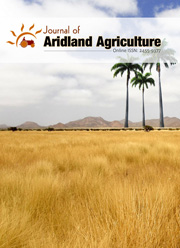NATURAL VARIATION IN FRUIT TRAITS OF WILD BAOBAB (Adansonia digitata L.) IN BLUE NILE STATE: AWAY FORWARD FOR SPECIES DOMESTICATION AND CONSERVATION IN SUDAN
DOI:
https://doi.org/10.25081/jaa.2018.v4.3397Abstract
The overall objective of this study was to distinguish and evaluate morphological variations in relation to locations of baobab fruits traits. The study was conducted in Blue Nile states Sudan 2015/2016. The morphological variation in fruits was evaluated by sampling fruits and assessing their characteristics. Five to twenty single trees were checking out randomly inside baobab location for the morphometric quantities (fruits) at different distances. Our first results point to there was high variety in fruit phenotypes. obovate, ovate, globose, fusiform, oblong, ellipsoid pointed, ellipsoid and spheroid emarginated fruit types were identified. Fruit shape was constant within each individual tree but was varied between trees. Results presented highly important differences (P?0.05) in fruit traits. The study findings revealed that spheroid emarginated fruit shape from Tolaba location was highly significant in term of fruit, seed and pulp weight, 407.00 ± 35.17 g, 187.07 ± 23.94g and 70.18 ± 6.23g respectively. Ovate fruit type was the most abundant (21 %), whereas spheroid emarginated and ellipsoid pointed shape was the least frequent (3%). The highly diversity found between locations is vital for domestication devotions and tree development through assortment and breeding candidate plus trees. Founded on the results documented, development of study doings on the practically unstudied baobabs in Blue Nile state, Sudan is greatly recommended.




 .
.